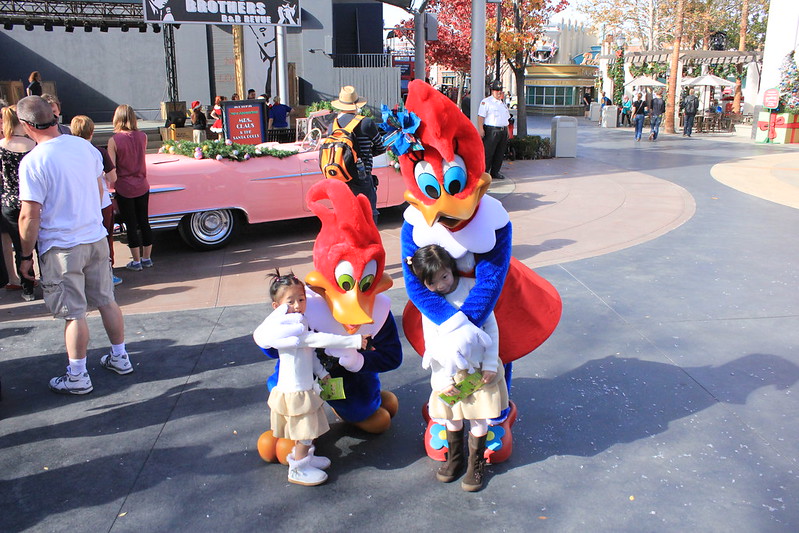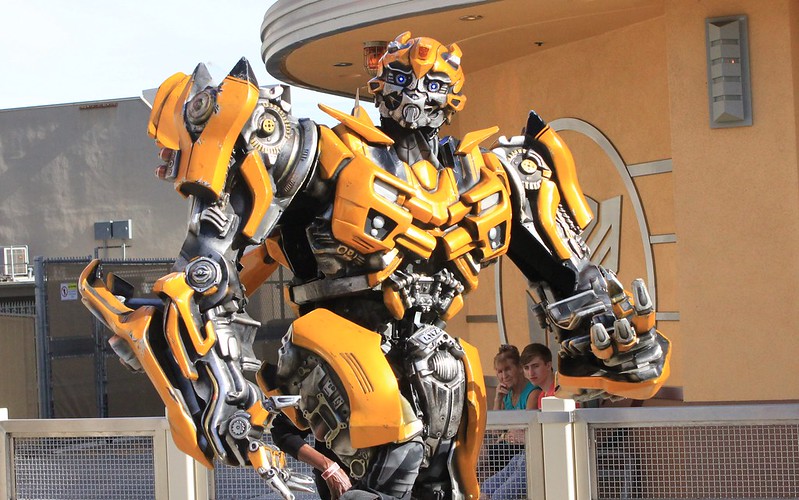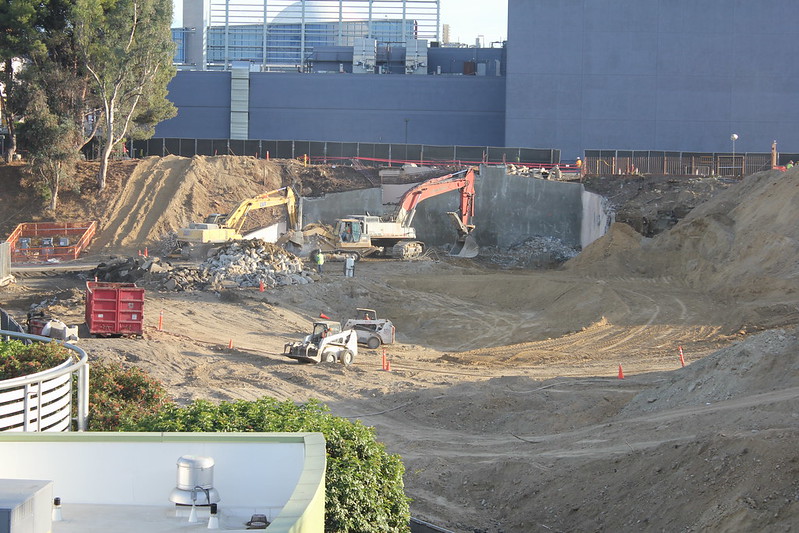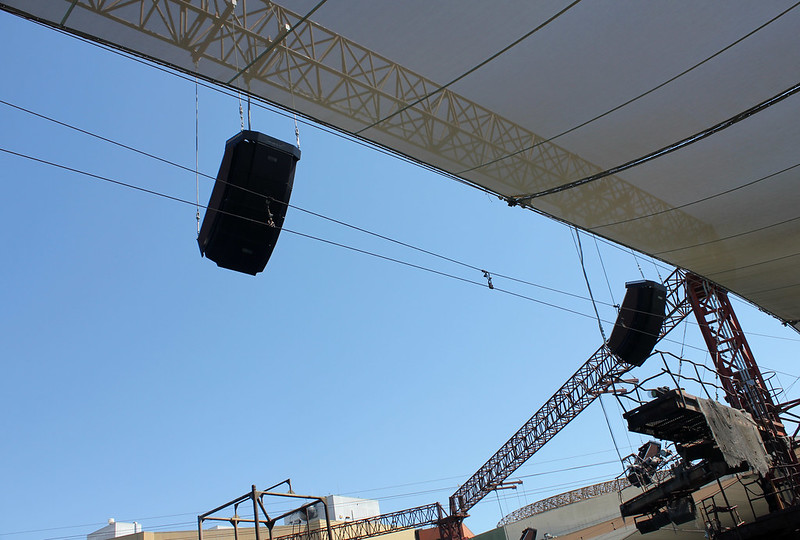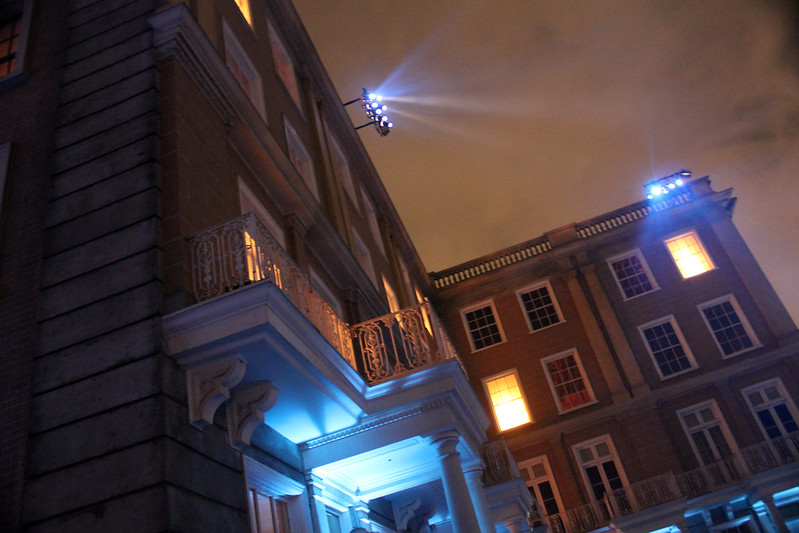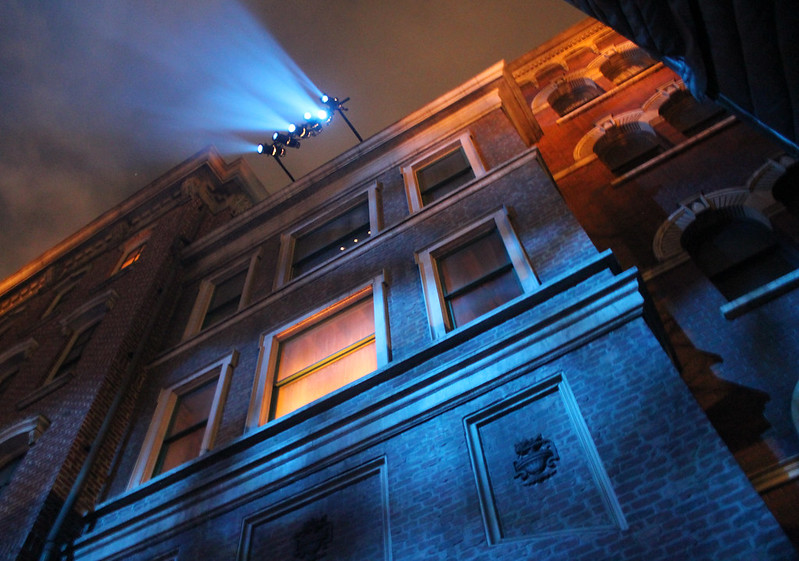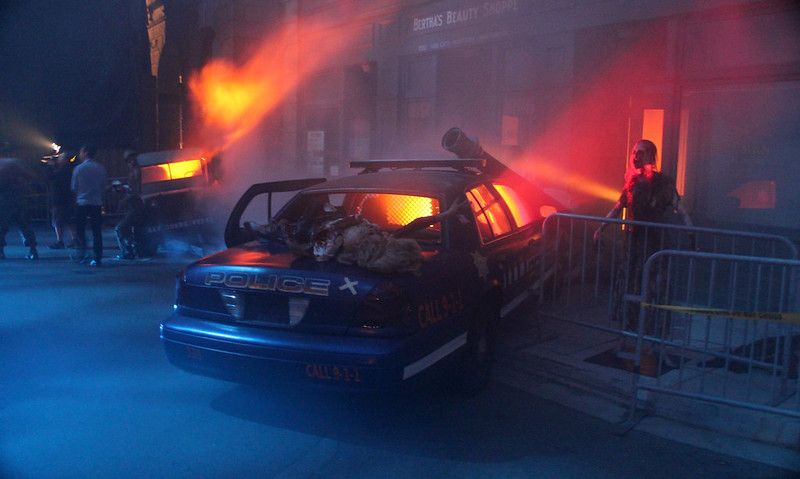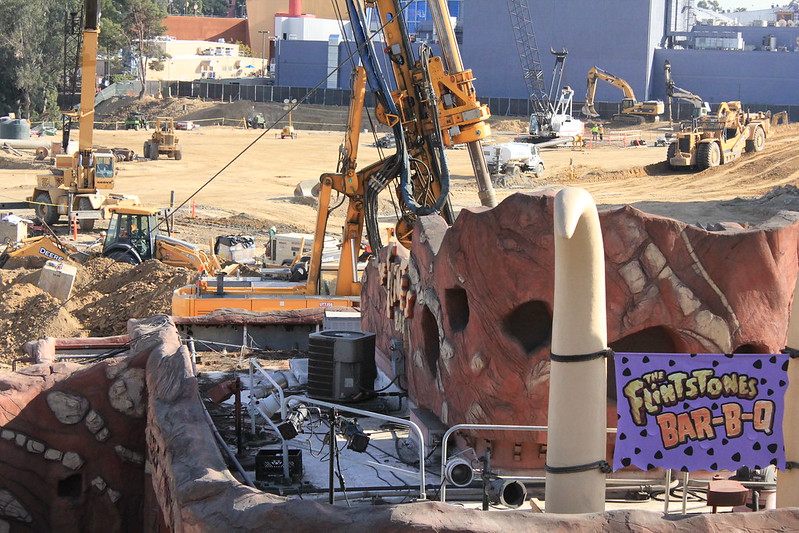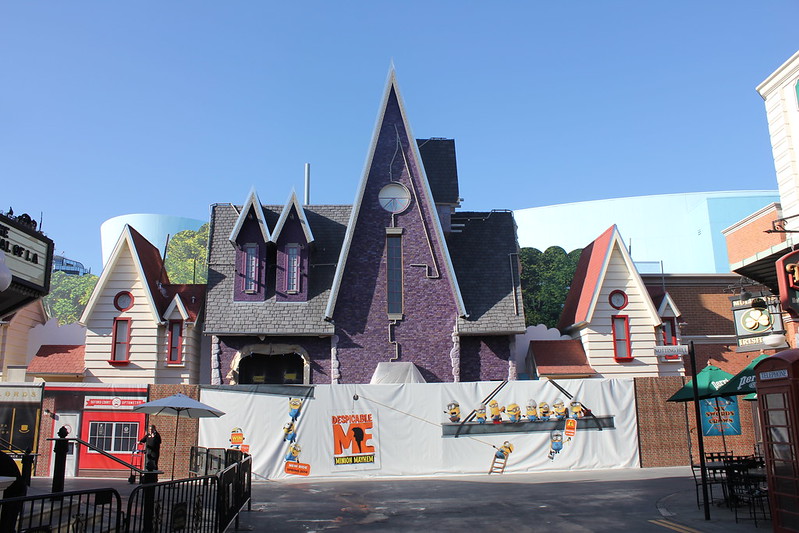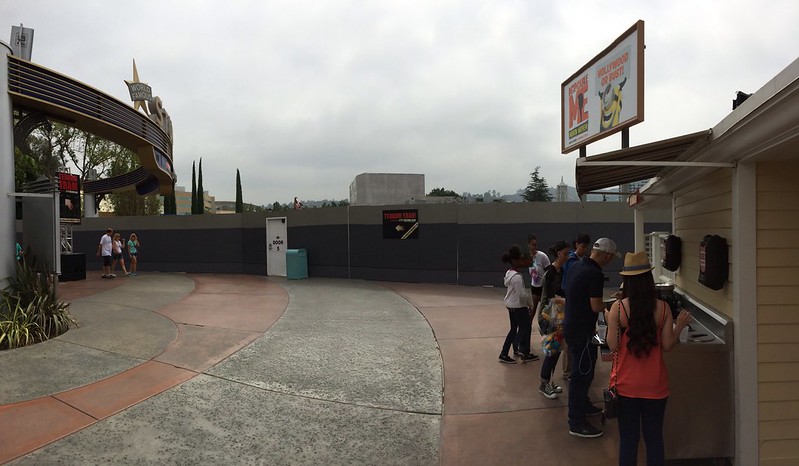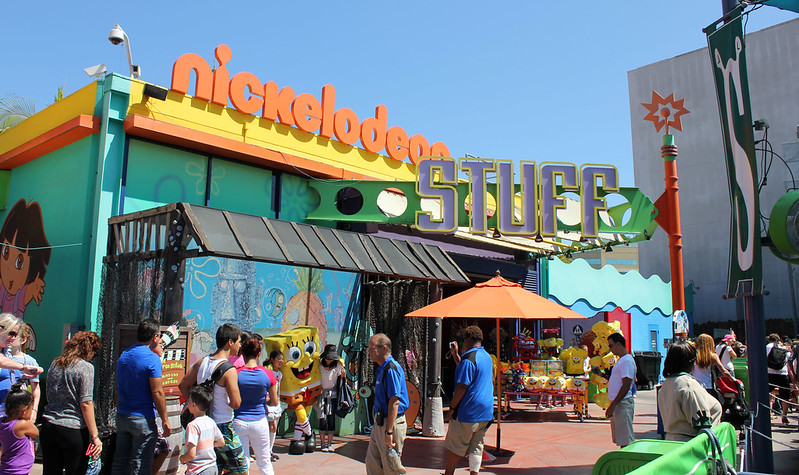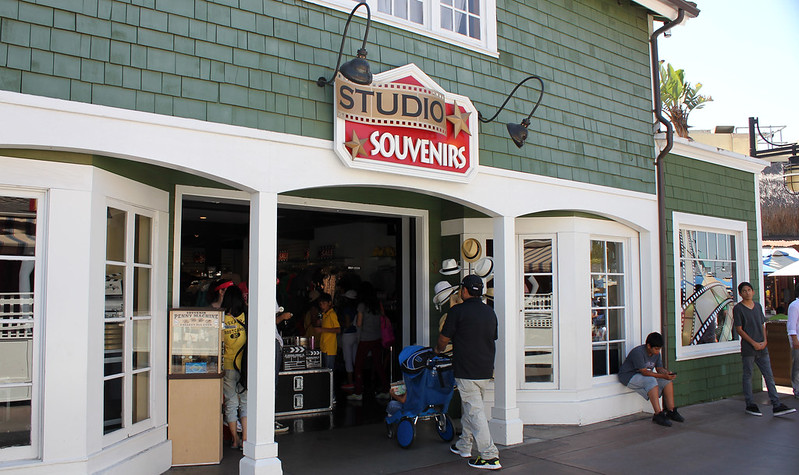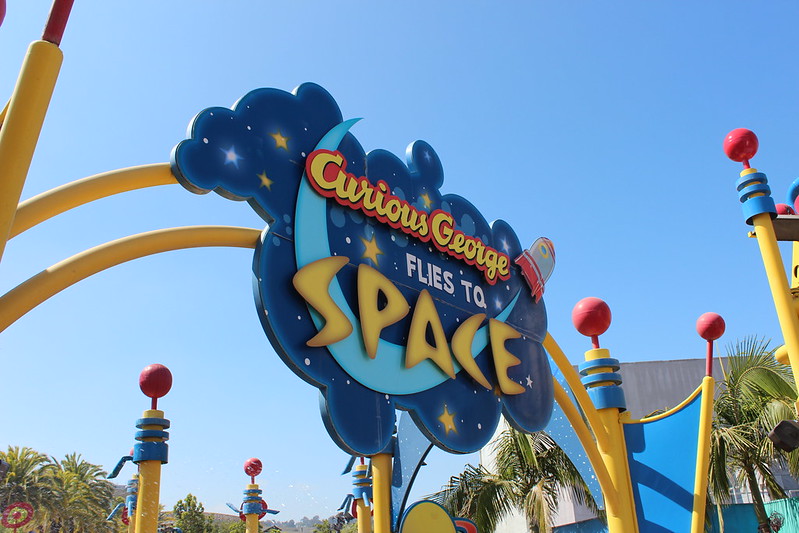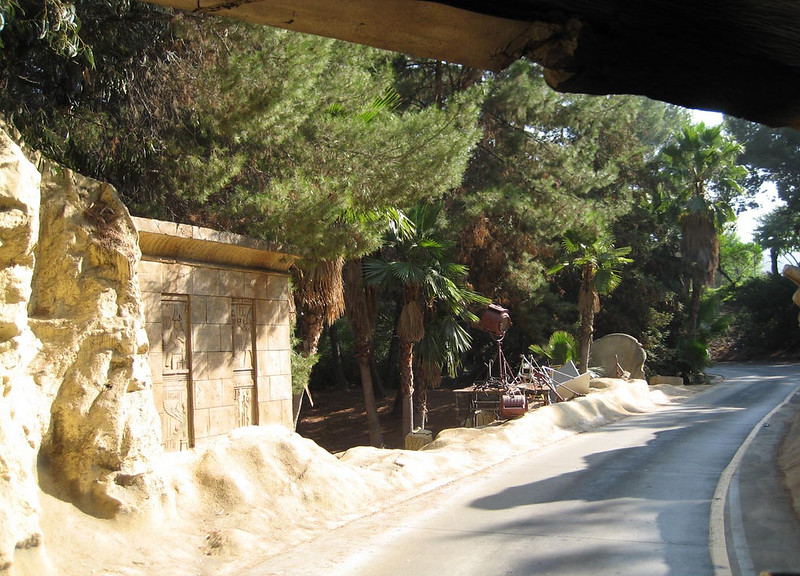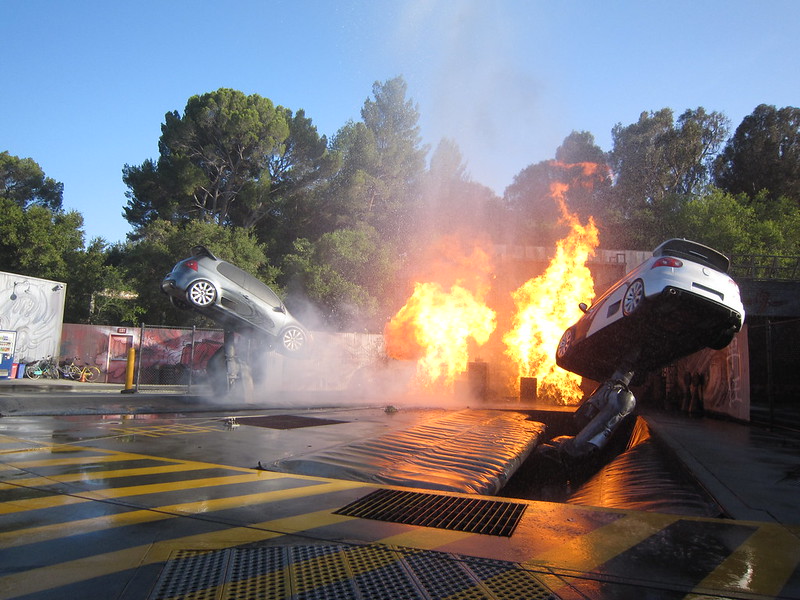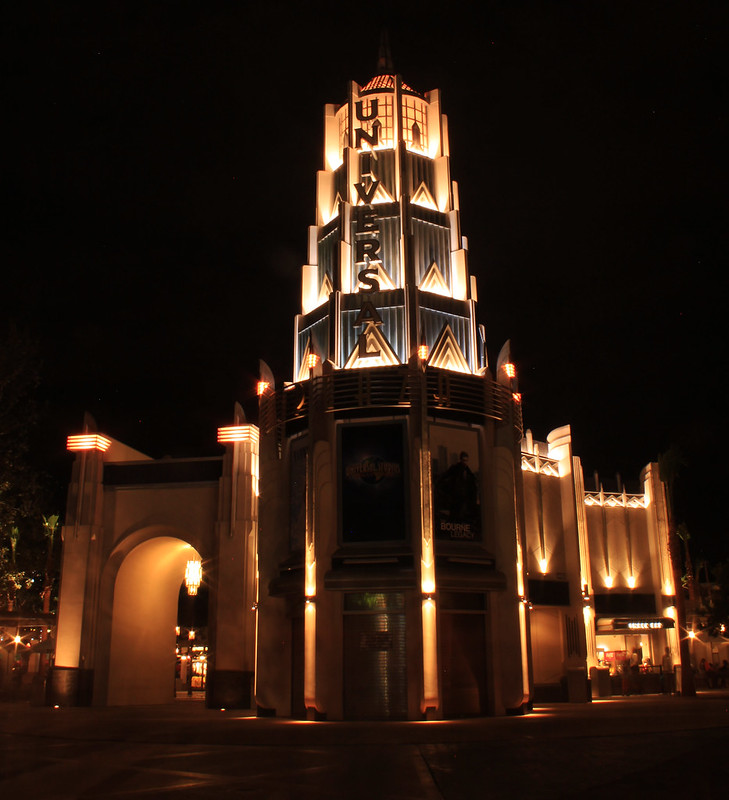
2013 was a monumental year for Universal Studios Hollywood.
In the span of just twelve months, we’ve seen the closure of three attractions and two stores, the announcement of two groundbreaking attractions, the introduction of a beautiful plaza space and the approval of a transformative plan aimed at redeveloping Universal City. Looking back, it’s fair to say that 2013 has been a year of change.
But in many respects, 2013 has also been a year filled with transitions. Construction walls and detours have now become a common sight for park guests as the theme park attempts to redevelop its infrastructure in the midst of bustling crowds and confined spaces. While it’s no secret that Hollywood’s difficult topography and surrounding community have not been conducive for a theme park, the current progress shows that – if willing – obstacles can be overcome and positive developments can eventually push forward.
With that in mind, here’s our list of the top ten defining moments that have occurred within the last year. Let’s start with number ten:

While character additions are nothing new, the increase in streetmosphere this year has been dramatic and far-reaching. Old favorites like Lucille Ball, Fievel, and SpongeBob have regularly lined Universal’s streets along with new favorites such as the minions from Despicable Me and the tap dancing construction workers situated on New York Street.
Most notably, the inclusion of an interactive Optimus Prime, Megatron & Bumblebee meet-and-greet has allowed guests to talk with their favorite Transformers characters in real time. Powered by agile stilt walkers and voice actors hidden in a remote location, the Transformers meet-and-greet has given guests the opportunity to either talk with the heroic and often-inspirational Optimus Prime or with the back-talking and often sassy Megatron. If music is more their taste, they can also share a tune with the always-dancing Bumblebee character right next door. Whatever they may choose, the additions have been a tremendous hit and guests usually gravitate towards the area once the Transformers make their presence known.
In the end, though the Transformers additions may not admittedly be a major development in its own right, the character additions as a whole can be seen as a major step for Universal. One thing is for certain: character interactions have improved and park guests have embraced the additions with open arms.

Built in the early 1970s, the Gibson Amphitheatre (then named after Universal up until the mid 2000s) has seen a variety of uses over the course of its thirty-year existence. Starting out as an open-air venue for Universal’s original Wild West stunt show, the theater served as a cross between theme park space and entertainment space until its solidification as an entertainment venue in the mid-1980s. Since then, the Gibson has hosted a variety of acts such as the original tour of the Blues Brothers and the yearly Teen Choice Awards.
However, demand for such a large venue eventually waned as influential acts began gravitating to smaller venues across town (namely L.A. Live). With the Wizarding World of Harry Potter gaining widespread acclaim and traction at Universal’s Islands of Adventure, Universal – in a monumental move – announced plans to demolish the Gibson in favor of a west coast version of Hogsmeade.
The Gibson eventually closed on September 6, with the entire structure demolished by mid-November, making way for Potter-related construction soon after.

In a somewhat surprising move, Universal decided to overhaul WaterWorld’s audio, shifting from the arena’s existing EAW point-and-shoot system to a completely new line array from Bose. In contrast to the typical speaker box replacements that you would expect at a theme park, WaterWorld’s sound enhancements called for a completely new truss erected on top of the existing theater.
This new truss – in turn – hoists two massive line arrays aimed at each section, with a total of six line arrays for the entire arena. On top of that, Universal also installed twenty-four subwoofers underneath each bank of seating with a total of seventy-two subwoofers underneath audience members at a given time. The audio bank originating from the set also received replacements, resulting in crisper sound.
While no official statement has been issued by Universal for the change (after all, it’s not really worthy of a press release), many believe that the new system allows the show to direct sound in a more precise manner, preventing sound from spilling over and affecting neighboring buildings. With this narrative in mind, the new audio enhancements eventually came at the expense of live gunfire, which instead have been replaced by prerecorded sound effects. Though it’s well known that Universal has been attempting to lower the amount of sound pollution originating from the show, the new prerecorded effects have left many fans scratching their heads – with many comparing the new effects to that of a cartoon. Whatever your perception may be of the new speaker system and sound effects, WaterWorld’s upgrade almost certainly guarantees that the show is here to stay for the next three years.
Whatever your perception may be of the new speaker system and sound effects, WaterWorld’s upgrade almost certainly guarantees that the show is here to stay.

As construction continued in full force throughout the year, many Halloween Horror Nights fans feared for a compromised event. With the Terminator and Wild West venue out of commission, Horror Nights was poised to lose two major maze locations without any clear alternate locations in sight. However, with the use of clever remapping, Horror Nights was able to maintain the same maze count as last year’s event by introducing an all-new backlot experience.
In an unprecedented move, Universal allowed guests to freely roam the new metropolitan sets dressed to the theme of The Walking Dead. Guests were dropped off in the same fashion as the Terror Tram and were given the choice to experience either The Walking Dead: No Safe Haven or Black Sabbath 13 3D set in soundstage 747. Despite the ambitious plan, crowd flow suffered as guests regularly complained about the obscure and often confusing navigational signs scattered across Universal’s large backlot.
Regardless of the mixed reviews, Universal’s decision to allow guest access in the heart of the studio set a new precedent for future iterations of Halloween Horror Nights.

After years of announcements and press, the Wizarding World of Harry Potter finally broke ground this fall with the demolition of the Gibson Amphitheatre and the Adventures of Curious George playground.
Billed as the largest addition to Universal since the introduction of the original Jurassic Park ride in 1996, Wizarding World aims to bring a slew of new attractions, dining options and shops aimed at recreating the mystical world of Harry Potter. Not only that, but the Potter-based land will also be among the first coherently themed areas Universal Studios Hollywood has to offer.
In short, Wizarding World aims to set a new precedent aimed at redefining the Hollywood experience as we know it.

The successor to Terminator 2:3D, Despicable Me: Minion Mayhem was officially announced last March on Universal’s official Facebook group. Based on the popular Despicable Me franchise, Despicable Me: Minion Mayhem will replicate the same existing experience over at Universal Studios Florida, allowing guests to board a 3D motion simulator similar to that of The Simpsons Ride.
However, unlike its Florida cousin, Hollywood’s experience is widely expected to be more elaborate, incorporating an elaborate façade and a play area themed after the fictional Super Silly Fun Land as seen in the first Despicable Me film. While the ride is expected to open on April 10, the announcement and construction progress has – thus far – shattered the notion of Hollywood receiving the short end of the attraction stick. Regardless of your own personal opinion on Terminator’s replacement, the Despicable Me franchise has proven to be a resounding hit – with the sequel ranking in over $900 million dollars in worldwide box office revenue.

In an effort to upgrade and update the park’s aging infrastructure, Universal demolished two stores on the Upper Lot: Nickelodeon Stuff and Studio Souvenirs.
As one of the last remaining pieces of the original Nickelodeon themed playground and show next door, Nickelodeon Stuff hosted a variety of Nickelodeon-branded merchandising that mainly targeted kids. The building also once stood next to the Warlord Tower as Sound Tracks, selling a variety of music cassettes and CDs from Universal Music Group.
Studio Souvenirs also had a storied past, serving as one of the oldest buildings on the Upper Lot. Themed after the fictional New England town of Amity (along with the neighboring Doc Brown’s Chicken), Studio Souvenirs sold a variety of Studio Tour/Universal themed merchandising, often carrying exclusive products in the latter half of its existence.
While both stores did not garner a particular following, Studio Souvenirs was often seen as a charming store that strayed away from generic Universal merchandising, carrying Studio Tour themed t-shirts, toys and stuffed animals. Both structures were demolished to make way for the Wizarding World of Harry Potter, which is expected to open in 2016.

2013 saw the closure of three attractions – two of which that stood on the pathway of the Studio Tour. The ongoing Harry Potter expansion sought the demolition of the Curious George playground, and the changing nature of the Studio Tour resulted in the loss of the Mummy’s Tomb and Fast and Furious: Extreme Close Up.
Built as the replacement to the aging Warlord Tower, the Adventures of Curious George (then christened as the Nickelodeon Blast Zone) was introduced as an attempt to attract a younger audience to the park. Featuring a large ball playroom filled with gadgets and air machines, two 500-gallon water buckets and numerous water guns and buckets, the playground was originally themed after Nickelodeon-based properties to accompany the Rugrats Magic Show next door. The playground was eventually rethemed to Curious George towards the latter half of its existence.
Serving as one of the oldest stops of the tour, the Mummy’s Tomb remained a fixture of the Studio Tour for over thirty years. Originally built in 1975 as the Glacier Avalanche, the tunnel has been rethemed numerous times over the years – more recently as the tunnel from the Mummy franchise, and as the seasonal lair for Universal’s annual Grinchmas event. Though we were admittedly too quick to report the Tomb’s demolition last November, the entire structure was eventually scrapped this winter in preparation for a new animation.
Fast and Furious: Extreme Close-Up was also shuttered last year in a move clouded in hearsay.
Over the past few months, numerous sources have pointed to the dissatisfaction and unease of studio brass over the portrayal of Extreme Close-Up after the blockbuster success of Furious 6, though Inside Universal has not been able to verify these claims. Whatever the cause may be, the stop was unceremoniously excluded from the tour last spring without explanation.
Fast and Furious was originally introduced in 2006 as an exciting new tour animation based off the franchise of the same name. The stop featured two KUKA arms with vehicle frames attached on either ends, moving in rhythm to a prerecorded sound track to simulate a large explosion. Reaction – as you would expect – was mixed, with many questioning the move to end the animation with Daddy Yankee’s Gasolina and the overall premise of two Volkswagen vehicles leaping in mid-air.
As the stop continues to languish without explanation, many believe that a new Fast and Furious tour animation is expected to return in the near future – this time borrowing some of the techniques used in King Kong 360 3D.

After a tumultuous decade of bargaining, rewrites, drafts and concessions, the NBCUniversal Evolution Plan was finally approved in 2013.
Seen as the largest reimaging of Universal City since its inception in 1915, the plan maps out an ambitious proposal that would outline the future Universal Studios and Universal Studios Hollywood for the next twenty-five years. Alongside improvements and additions that would modernize the studio, the Evolution Plan would also introduce two additional hotels, rebuilt theme park facilities, new animations on the Studio Tour, the Wizarding World of Harry Potter, additional parking structures, and rerouting of surrounding roads and a total of 2,433,000 square feet of new development.
Indeed, the effects of the Evolution Plan can already be seen (and felt!) throughout the property.
In 2013 we’ve seen the expansion of Jurassic Parking, the rise of satellite facilities near the Red Sea, the introduction of Universal Plaza and the demolition of the Gibson Amphitheater. To say that Universal Studios Hollywood has received an uptick of development would be an understatement, and the Evolution Plan stands as a testament to continued development for the next twenty-five years.
However, while the plan marks a monumental leap for Universal, its passage signifies something more: a new era for Universal City, and more importantly, Universal Studios Hollywood. After numerous ownership changes throughout the years, the passage of the plan solidifies Comcast’s commitment to the future of the studio and the theme park. Portrayed as an afterthought in the eyes of many corporate owners, Universal Studios Hollywood was often rumored to be on the verge of closure, with General Electric and other owners looking for ways to monetize the property at the expense of the studio and theme park.
With the passage of the NBCUniversal Evolution Plan, Comcast has shown a refreshing interest in the theme park industry, and more specifically Universal Studios.

While 2013 saw the removal and closure of numerous stores, restaurants and attractions, Universal Plaza buckled against the trend by introducing a beautiful central plaza space to the Upper Lot.
Replacing the dilapidated Wild West arena, Universal Plaza included an art deco tower with Universal lettering as the area’s defining feature, a small LED-lit water playground, Pink’s Hotdogs and an outer perimeter – freeing an otherwise cramped and congested area of the park.
Though Universal Plaza may not be a groundbreaking attraction in itself, the park’s piazza – like the Evolution Plan – represents something much more.
For us, Universal Plaza represents the end of short-sighted decisions that have often plagued Universal, and the start of instrumental additions aimed at refreshing the park as a whole. More importantly, Universal Plaza symbolizes the end of needless compromises. While still beholden to the area’s constraints and weaknesses, Universal Plaza shows that limitless ambition and willpower (along with a bit of cash) can ultimately overcome the park’s oft-repeated constraints, and that groundbreaking attractions can still be built at Universal despite a laundry-list of restrictions and regulations.
And while Universal Plaza was plagued with problems of its own (ironically opening at the end of the summer season), the addition marks the beginning of an optimistic era filled with positive change after years of neglect and ambivalence – ushering in a decade that could rival that of the 90s.

Jon Fu is the editor-in-chief of Inside Universal.
Jon originally founded InsideUniversal.net in 2006 as a summer hobby aimed at providing families and fans a resource for all things “Universal Studios Hollywood.” Since then, the website has taken him throughout the United States and around the world – including to places like Universal Orlando Resort, Universal Studios Japan and Universal Studios Singapore.
Jon currently resides in Santa Cruz, California with his bamboo plant. You may reach him at jon@insideuniversal.net.



